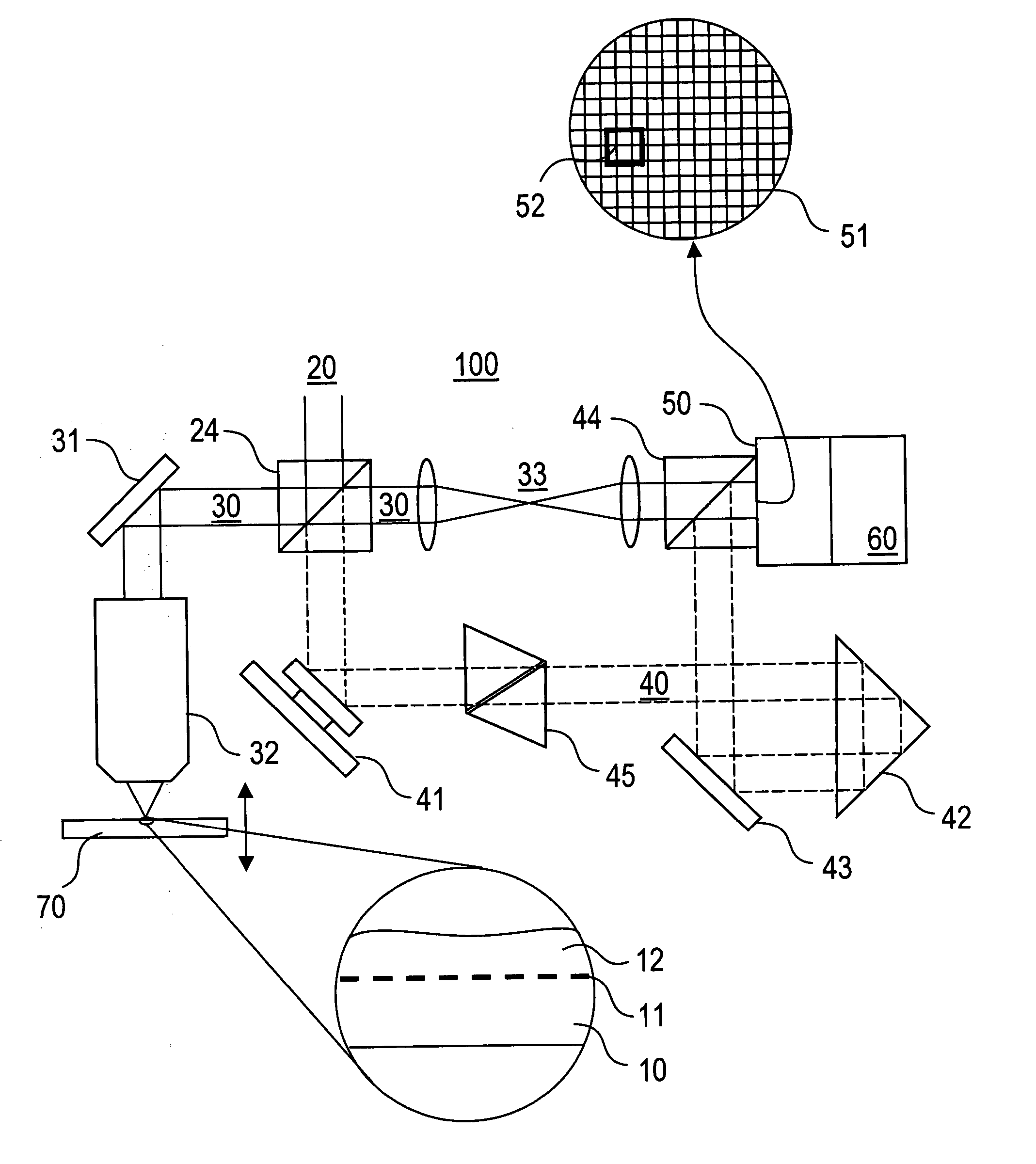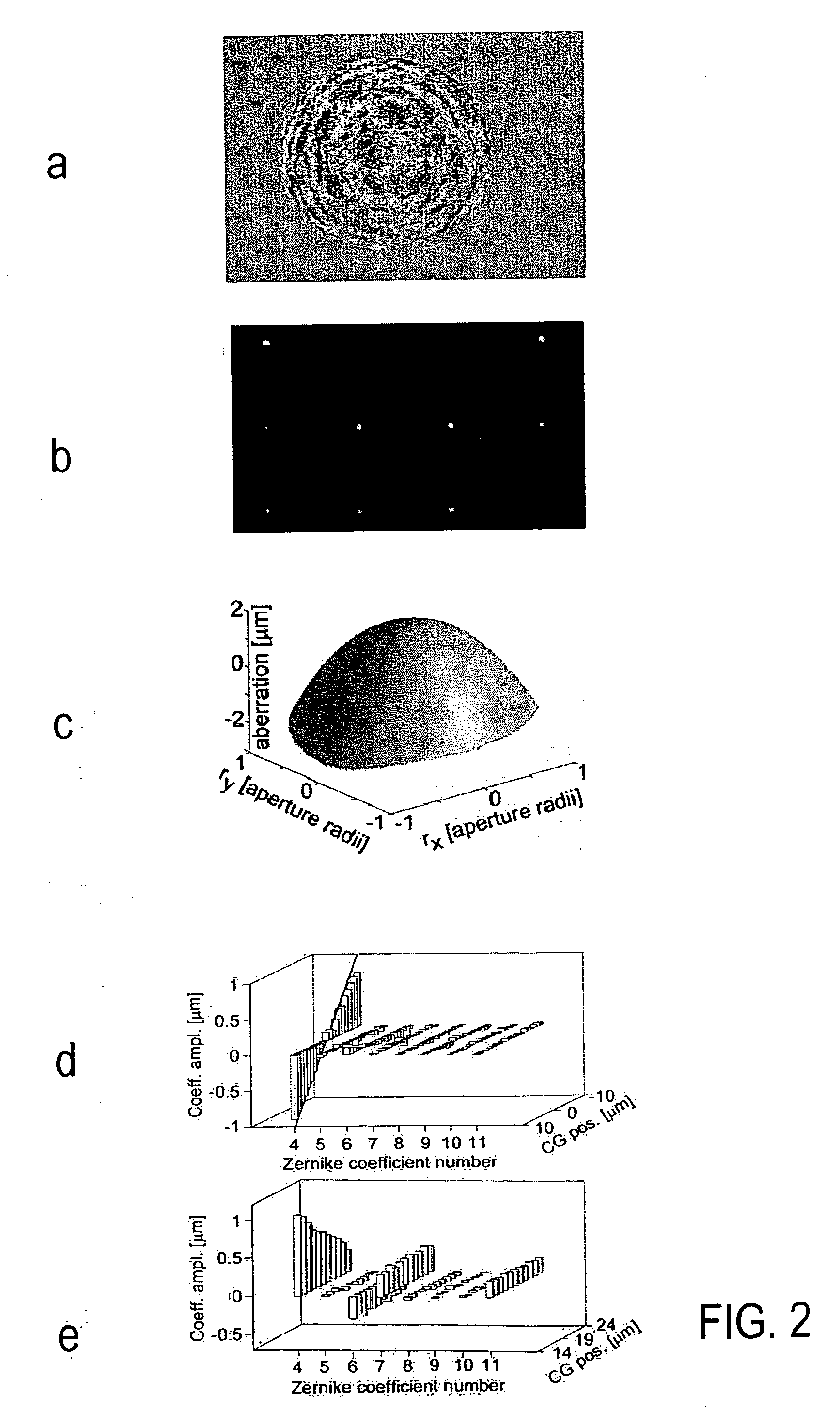Method and device for wave-front sensing
- Summary
- Abstract
- Description
- Claims
- Application Information
AI Technical Summary
Benefits of technology
Problems solved by technology
Method used
Image
Examples
Embodiment Construction
1. Optical Setup of a Wave-Front Sensing Device
[0040] According to the embodiment illustrated in FIG. 1, the wave-front sensing device 100 of the present invention comprises an illumination light path 20, which is split at the beam splitter cube 24 into the sample light path 30 and the reference light path 40.
[0041] The illumination light path 20 includes a laser light source and optical components, which are shown with further details in FIG. 3. The laser light source is a Ti:sapphire laser (Coherent Mira, centre wavelength 915 nm) emitting horizontally polarized light pulses with a pulse duration of about 100 fs. The beam splitter cube 24 is a non-polarizing 50:50 splitter (BK 7, Coherent, Inc.).
[0042] The sample light path 30 extends from the beam splitter cube 24 via a deflection mirror 31 and a focussing optic 32 to the specimen 10 and in opposite direction from the specimen 10 via the focussing optic 32, the mirror 31, the beam splitter cube 24, an imaging optic 33 and a b...
PUM
 Login to View More
Login to View More Abstract
Description
Claims
Application Information
 Login to View More
Login to View More - R&D Engineer
- R&D Manager
- IP Professional
- Industry Leading Data Capabilities
- Powerful AI technology
- Patent DNA Extraction
Browse by: Latest US Patents, China's latest patents, Technical Efficacy Thesaurus, Application Domain, Technology Topic, Popular Technical Reports.
© 2024 PatSnap. All rights reserved.Legal|Privacy policy|Modern Slavery Act Transparency Statement|Sitemap|About US| Contact US: help@patsnap.com










